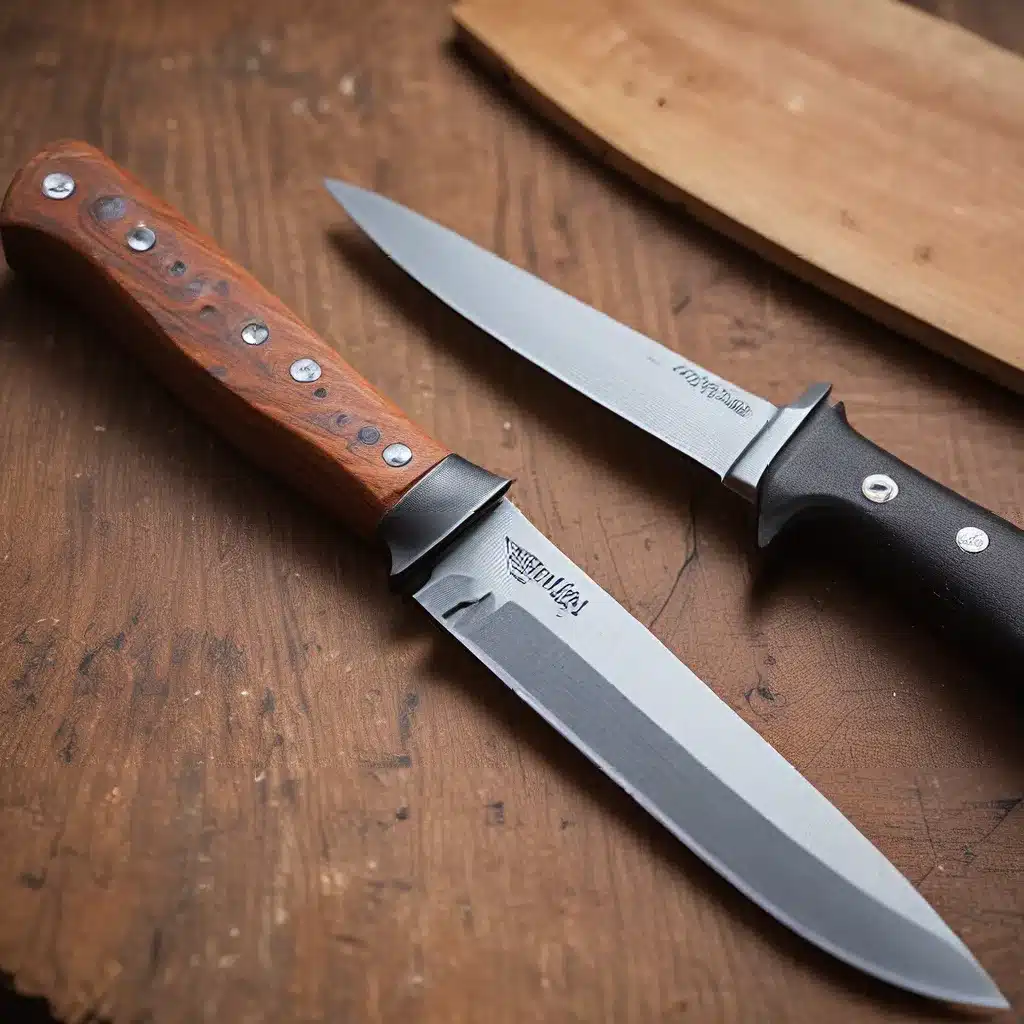
The Sharpness Paradox: Why Dull Knives Can Be Dangerous
As a passionate home cook, I’ve come to appreciate the power of a well-maintained knife. It’s the quintessential tool in my culinary arsenal, a faithful companion that elevates my cooking experience to new heights. Yet, as I’ve learned, the art of knife maintenance is no small feat. In this article, I’ll share my hard-earned insights and expert techniques to help you master the art of keeping your knives in tip-top shape, ensuring a lifetime of cutting excellence.
Let’s start with a little-known fact: dull knives can actually be more dangerous than sharp ones. Hear me out. When a knife is dull, it requires more force to cut through food, increasing the risk of the blade slipping and causing injury. Conversely, a sharp knife glides effortlessly through ingredients, reducing the likelihood of accidents. It’s a sharpness paradox that many home cooks fail to recognize.
As the experts at The Sharpening Center explain, “A well-maintained knife not only enhances cutting efficiency but also reduces the risk of accidents in the kitchen. Dull blades prone to slippage and imprecise cuts can compromise both safety and culinary outcomes.”
The Art of Sharpening: Mastering the Blade’s Edge
At the heart of knife maintenance lies the art of sharpening. While the prospect may seem daunting, it’s a skill that every home cook can acquire with a bit of practice and patience. The key is understanding the optimal angle for your knife’s edge, typically between 15 to 20 degrees for most Western-style knives.
Using sharpening stones, honing rods, or electric sharpeners, the goal is to restore the blade’s sharpness and precision. With gentle yet deliberate strokes, guide the knife along the sharpening surface, ensuring uniformity and consistency across the entire edge. Repeat the process on both sides until a fine, burr-like edge emerges, indicating the knife has reached its peak sharpness.
As the experts at Town Cutler advise, “We never recommend machine sharpening as these techniques are often too abrasive, are not able to achieve as fine of an edge, remove too much steel, and can heat up the blade, potentially damaging the structure of the steel.”
The Honing Ritual: Realigning the Edge
Now, while sharpening is crucial, it’s not the only step in maintaining your knives. Honing is an equally important technique that often goes overlooked. This simple yet effective process realigns the blade’s edge, ensuring optimal performance between sharpening sessions.
Using a honing steel or ceramic rod, hold the knife at a slight angle against the honing surface. With controlled, smooth motions, draw the blade from base to tip, exerting gentle pressure. Incorporate this honing ritual into your culinary routine, preferably before each use, to keep your knives consistently sharp and precise.
Proper Storage and Handling: Preserving Longevity
But knife maintenance doesn’t stop at sharpening and honing. Proper storage and handling practices are essential for preserving the longevity of your blades. Invest in quality knife blocks, magnetic strips, or sheaths to protect your knives from damage and ensure safe storage.
Avoid the common mistake of tossing your knives into cluttered drawers or exposing them to excessive moisture, which can lead to corrosion and dullness. When handling your knives, exercise caution and mindfulness. Refrain from using them for tasks beyond their intended purpose and avoid subjecting them to undue stress or force.
As the warranty policy from GiantMouse states, “Knives returned for cosmetic defects including blade edge issues must be in as new condition unless a mechanical defect presents itself through use. Do not attempt to sharpen your knife if you believe there is an issue with the factory blade edge upon receipt of the knife – this will void the warranty.”
The Culinary Journey: Elevating Your Craft
Mastering the art of knife maintenance is a journey, one that requires patience, practice, and a deep appreciation for the craftsmanship embodied in each blade. But the rewards are worth it. By investing time and effort into caring for your knives, you not only enhance your culinary prowess but also cultivate a deeper connection to the art and craft of cooking.
Remember, a well-maintained knife is more than just a tool – it’s a testament to your commitment to quality and mastery in the kitchen. So, sharpen your skills, hone your techniques, and embark on a journey of culinary discovery with confidence and precision.
And if you ever need assistance with your blade sharpening or repair needs, don’t hesitate to reach out to the experts at Herman Knives. They’re here to help you unlock the full potential of your blades and ensure a lifetime of cutting excellence.
Conclusion: A Lifelong Commitment to Knife Maintenance
In the bustling world of home cooking, the humble kitchen knife stands as the quintessential tool, a faithful companion in the pursuit of culinary excellence. But as I’ve learned, maintaining the sharpness and integrity of these blades is no easy feat. It requires a lifelong commitment to mastering the art of knife maintenance.
Through the techniques and tricks I’ve shared in this article, I hope I’ve convinced you of the importance of regular sharpening, honing, and proper storage and handling. By nurturing these habits, you’ll not only enhance the safety and efficiency of your cooking but also elevate the overall quality of your culinary creations.
So, sharpen your skills, hone your techniques, and embrace the journey of knife maintenance with a spirit of reverence and appreciation. After all, a well-maintained knife is more than just a tool – it’s a testament to your commitment to excellence in the kitchen.


